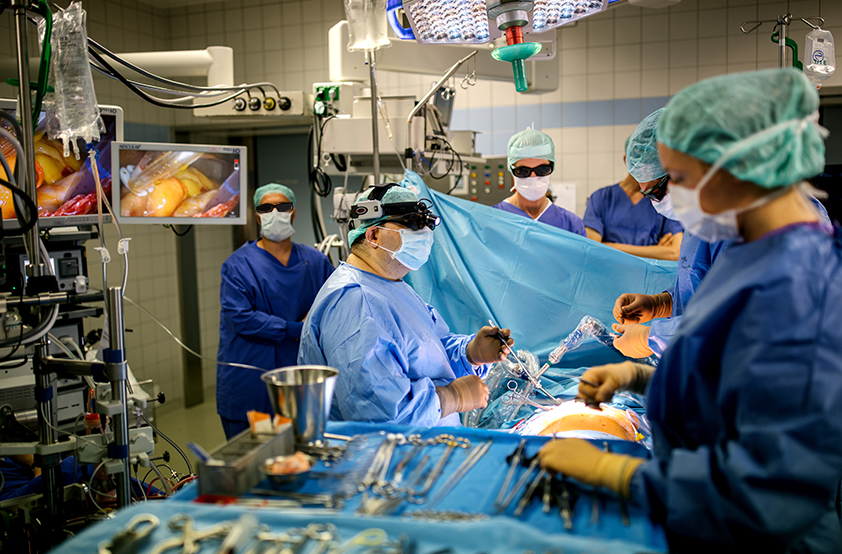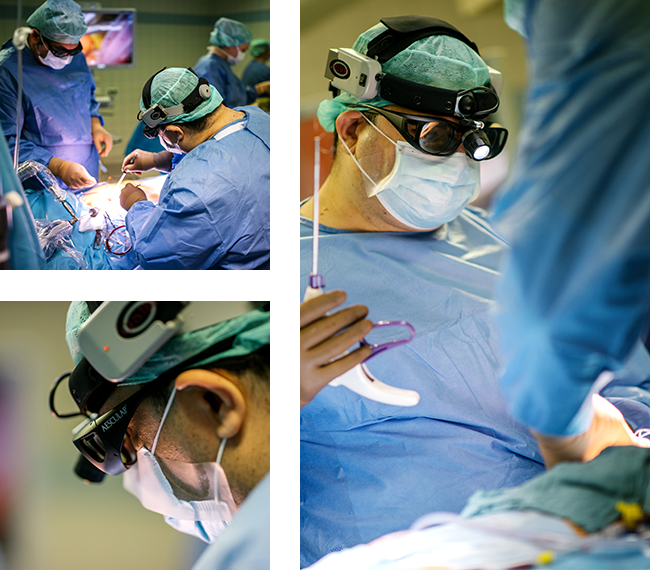
Endoscopic replacement of the ascending aorta

The aorta connects the heart to the systemic circulation and carries oxygen-rich blood to the organs. The ascending aorta departs from the left ventricle of the heart immediately after the aortic valve. Depending on the disease, such as aortic dilatation (aortic aneurysm) or aortic rupture (aortic dissection), replacement of the ascending aorta is necessary.
If aortic valve stenosis or insufficiency occurs at the same time as aortic disease, a Wheat operation is necessary. The aorta is excised above the coronary arteries, and the diseased part of the aorta is removed and replaced with a vascular prosthesis. The diseased aortic valve is replaced at the same time.
The Bentall operation is a procedure for treating aneurysms near the aortic valve that also requires the aortic valve to be replaced. A vascular graft with an integrated valve prosthesis is used to replace the dilated section of the aorta. The coronary vessels (coronary ostia) are then reimplanted to the aortic prosthesis to restore cardiac perfusion.
Endoscopic replacement of the ascending aorta with or without replacement of the aortic valve is an innovative procedure that is only performed in a few heart centers worldwide.
A four-centimeter incision is performed between the right-sided ribs via the third intercostal space. Using a 3D camera and 3D glasses, the surgeon is able to gain a high-resolution view of the surgical field and performs the surgical steps using special surgical instruments to remove the diseased segment of the aorta and aortic valve and replace them with prosthetic synthetic implants. The heart-lung machine, which takes over the oxygen supply to the other organs during the operation and stopping of the heart, is mainly connected via the femoral vessels.
Endoscopic replacement of the ascending aorta offers a promising alternative to traditional open surgery and can significantly improve the speed of recovery and quality of life of patients with aortic disease.

